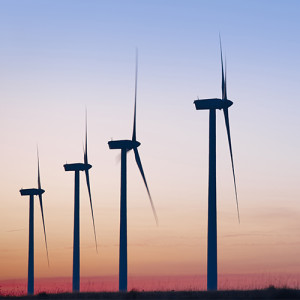
19 August 2016
Insurance Australia Group (IAG) today became the first Australian insurance company to commit to the 2015 Paris Agreement to limit global average temperature rise to two degrees.
You’d think insurance companies would have been the first institutions to acknowledge and support actions to address climate change, given their inherent understanding of risk, and potential exposure on both their investments and underwriting. However, the Australian insurance industry has been slow to move, preferring to discuss climate change in terms of mitigation from its effects, rather than driving a shift away from fossil fuels – the primary source of carbon emissions.
IAG has felt the effects of a changing climate, acknowledging that extreme weather events and natural disasters have increased in frequency and severity. This has had a direct impact on IAG’s profitability, as claims from natural disasters have exceeded provisions in nine out of the previous eleven years, costing IAG in excess of a billion dollars.
IAG’s billion dollar loss on extreme weather
Over the past 11 years, IAG has paid out more on extreme weather events than they have provisioned for, amounting to a loss of over $1 billion.
| Financial Year | Provisions | Actual | Difference |
|---|---|---|---|
| 2015/16 | $600 m | $659 m | -$59 m |
| 2014/15 | $700 m | $1048 m | -$348 m |
| 2013/14 | $640 m | $553 m | $87 m |
| 2012/13 | $614 m | $464 m | $150 m |
| 2011/12 | $580 m | $658 m | -$78 m |
| 2010/11 | $435 m | $610 m | -$175 m |
| 2009/10 | $350 m | $463 m | -$113 m |
| 2008/09 | $314 m | $451 m | -$137 m |
| 2007/08 | $320 m | $502 m | -$182 m |
| 2006/07 | $170 m | $176 m | -$6 m |
| 2005/06 | $155m | $360 m | -$205 m |
| TOTAL | -$1066 m |
Insurers have an important role to play in educating their customers and the broader public about the risks posed by climate change. However, the industry’s peak body – the Insurance Council of Australia – has been almost mute on the issue, currently without a policy or commitment to two degrees or any commentary on what it means for the industry.
Australia’s big four banks each made a commitment to two degrees at the end of 2015. However, nine months later, they’re still trying to work out what that means for their businesses. We’d hope that IAG has not simply made this commitment without any inkling of what it actually means in practice.
Primarily, if IAG has any involvement in underwriting the fossil fuel industry or businesses that support the fossil fuel industry, then this part of its business must be phased out, and quickly.
Secondly, IAG must understand and disclose its exposure to the fossil fuel industry in its $12.9 billion investment portfolio. Even if its exposure is as low as 5%, this equates to a $650 million investment in an industry that is driving dangerous climate change. IAG should aim to reduce its exposure to pure play fossil fuel companies to zero as quickly as possible, while aggressively engaging with companies that are sufficiently diversified to ensure a rapid phase out of their fossil fuel operations.
Thirdly, IAG must use its role on the Insurance Council of Australia to lobby for tougher government policy on carbon emissions. It should also play a greater public role in educating the broader population about the extreme risks from climate change.
Finally, IAG should continue its work in mitigation from extreme weather events. There are thousands of communities around the country and throughout South-East Asia, where IAG also has a presence, which require protection from the increasing risk of flood, storm and fire. IAG could also play a role in encouraging the switch to renewable energy at a domestic level, and encouraging its vast customer base of motorists to switch to electric vehicles.
We applaud IAG for supporting the 2015 Paris Agreement, but it is just the first step. IAG can and should be doing much more to assist in the transition to a carbon neutral economy.
